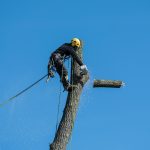Core considerations for wood burning stove selection in Norfolk cottages
Selecting the right wood burning stove for a Norfolk cottage requires careful assessment of various factors tailored to traditional cottage environments. First, evaluating the stove size and heat output is crucial. Cottage rooms often feature lower ceilings and smaller volumes, so a stove with moderate heat output ensures efficient warming without overheating. Over-sized units can waste fuel and cause discomfort, while undersized stoves fail to provide adequate warmth.
Efficiency and emissions standards are another core consideration. Rural Norfolk properties may be subject to local clean air regulations that limit particulate emissions. Choosing a stove model with advanced combustion technology can meet these requirements while reducing environmental impact.
Also read : Reliable carpet cleaning services across South London
Fuel type is equally significant. The availability of seasoned hardwoods or locally sourced biomass should guide stove selection to minimize costs and support sustainability. Moreover, adherence to regulations around fuel types is important, as some areas restrict the burning of certain materials to lower pollution.
In summary, wood burning stove selection for Norfolk cottage stoves demands attention to size, efficiency, emissions, and suitable fuels — all critical for safe, effective, and responsible heating in rural Norfolk homes.
Have you seen this : Benefits of eps insulation for your home
Navigating local regulations and installation requirements
Understanding Norfolk clean air regulations is essential for anyone planning wood stove installation in this area. These regulations set strict limits on particulate emissions to protect local air quality. Compliance requires choosing stoves that meet or exceed the required emission standards, often those certified with clean burn technology.
Installation in Norfolk cottages demands particular attention due to their age and structure. Older buildings typically have unique chimney constructions or fragile materials, requiring tailored fitting methods. Proper installation ensures efficient stove operation and adherence to safety norms, reducing risks such as chimney fires or carbon monoxide leaks.
Professional installation and certification are not just recommended but often legally required. Engaging a qualified installer familiar with Norfolk regulations guarantees that the stove meets all local codes. This includes correct chimney lining, proper ventilation, and securing relevant permissions where necessary.
In summary, aligning wood stove installation with Norfolk clean air regulations and structural realities is critical. It safeguards the environment and the home, ensuring the longevity and safety of the stove while upholding legal compliance throughout the process.
Core considerations for wood burning stove selection in Norfolk cottages
Choosing the right wood burning stove for Norfolk cottages demands precise attention to stove size and heat output. Traditional cottage rooms usually have lower ceilings and compact spaces. Therefore, selecting a stove that provides adequate warmth without overheating is key. Oversized stoves risk wasting fuel and discomfort, while undersized ones fail to heat sufficiently. Accurate measurement of room volume helps ensure optimal heat delivery.
Efficiency and emissions are crucial for rural Norfolk properties, many of which fall under strict clean air guidelines. Opting for stoves with modern combustion technology reduces particulate output while maintaining high fuel efficiency. This promotes a healthier environment and complies with local standards.
Fuel type must reflect locally available materials and regulations. Selected fuels should be seasoned hardwood or approved biomass to sustain clean burning and cost efficiency. Misalignment with fuel regulations can produce excess pollution and regulatory issues. By focusing on wood burning stove selection, cottage heating advice points strongly to balanced stove capacity, emissions compliance, and appropriate fuel choice to ensure longevity and responsible warmth in Norfolk homes.
Core considerations for wood burning stove selection in Norfolk cottages
Selecting the ideal wood burning stove for Norfolk cottages hinges on balancing heat output with room size. Traditional cottage rooms, with their compact dimensions and lower ceilings, call for stoves that produce enough warmth without causing overheating. Measuring the volume of each room is essential to determine the appropriate stove size and avoid fuel waste or insufficient heating.
Efficiency and emissions must align with rural Norfolk standards. Stoves featuring clean burn technology offer high combustion efficiency, reducing particulate emissions in line with local clean air objectives. This not only benefits environmental sustainability but also ensures compliance with regulations impacting cottage heating advice.
Fuel choice is a further vital consideration. Opting for fuels like seasoned hardwood or approved biomass supports both cost-effectiveness and cleaner burning. Since fuel type influences stove performance and emissions, aligning fuel availability with stove specifications enables responsible, economical heating for Norfolk cottages.
In summary, the wood burning stove selection process requires precise sizing, emission-conscious choices, and fuel compatibility to meet the unique demands of Norfolk cottage environments.
Core considerations for wood burning stove selection in Norfolk cottages
Choosing the right wood burning stove involves careful evaluation of stove size and heat output, especially for Norfolk cottage stoves. Traditional cottages tend to have smaller rooms with low ceilings, requiring stoves that deliver balanced warmth without overheating. Accurately calculating room volume helps prevent fuel waste and ensures optimal comfort.
Efficiency and emissions play a pivotal role for rural Norfolk properties. Stoves with advanced combustion technology minimize particulate emissions, aligning with environmental guidelines and reducing fuel consumption. This not only supports healthier air quality but also adheres to local clean air standards, a key aspect of cottage heating advice for the area.
Fuel type is equally significant. Locally sourced, seasoned hardwoods or approved biomass fuels offer cleaner burning with fewer emissions. Selecting fuels compliant with Norfolk’s restrictions ensures sustainable operation and avoids penalties. Matching the stove’s requirements with available fuel maximizes performance and longevity.
In sum, successful wood burning stove selection balances proper sizing, efficient combustion, and compatible fuel. This approach guarantees practical, eco-conscious heating tailored to the unique demands of Norfolk cottages.










